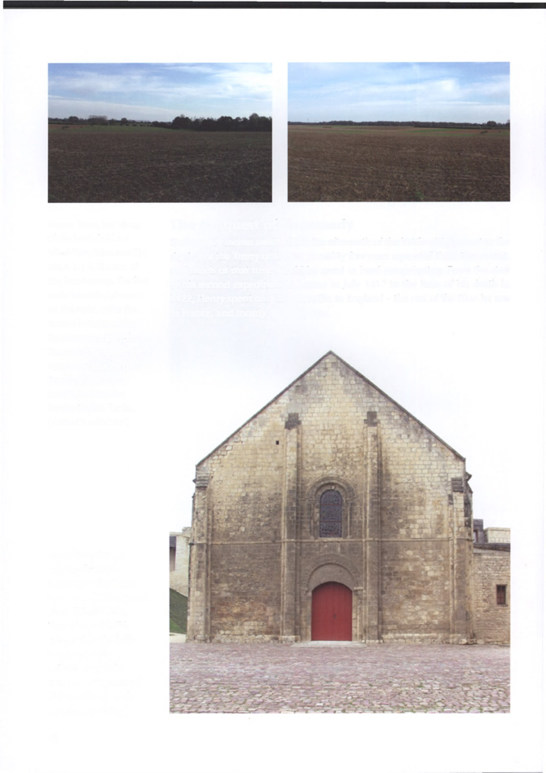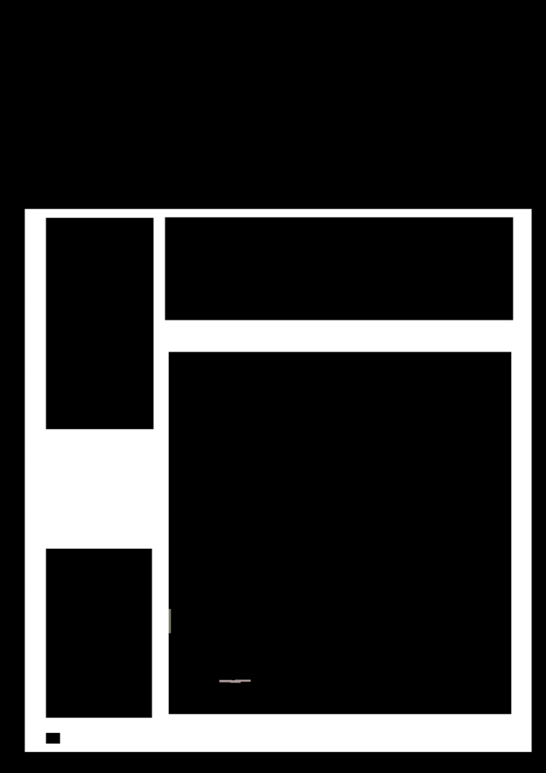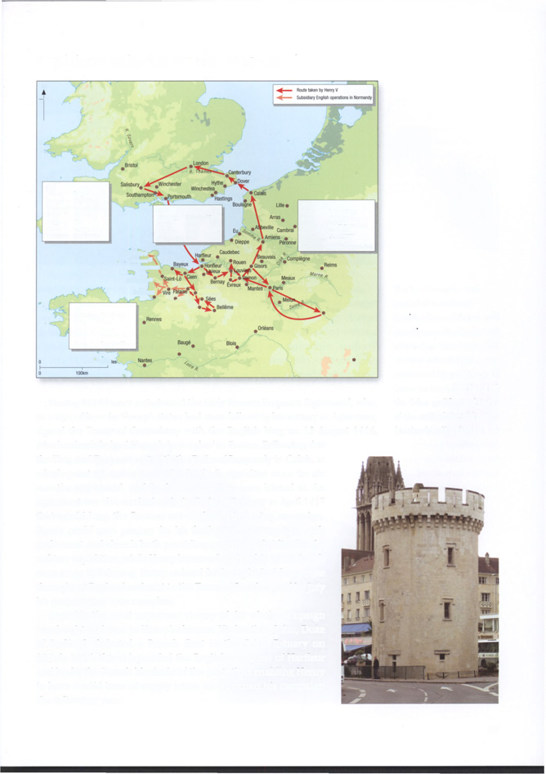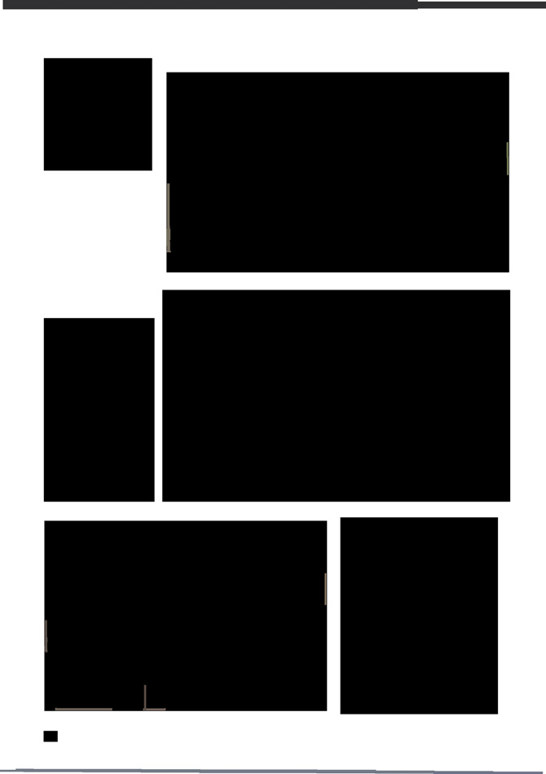Authors: Marcus Cowper
Tags: #Military History - Medieval
Henry V: The Background, Strategies, Tactics and Battlefield Experiences of the Greatest Commanders of History Paperback (13 page)


A monument to the dead
of the battle of Agincourt
(or Azincourt) stands just
outside the village of
Maisoncelle, along
with a map detailing the
events of the battle.
(Author's collection)
Mtmwm
m igit
of the almighty, protected the English. All the glory be given to her not us.
St Maurice took Harfleur, St Crispin carried the battle of Agincourt/ This has
an interesting parallel in later history when the author Arthur Machen
published an account of the battle of Mons on 29 September 1914 that has
the archers of Agincourt assisting the British Expeditionary Force in the field.
Though intended as a fiction, many took this as a true account of events.
With the battle won and the French dispersed, Henry withdrew with his
forces to Maisoncelle for the night before undertaking a three-day trek
to Calais, where he waited for a fortnight before returning to Dover on
16 November and then London where his great victory was duly celebrated
in some style.
This was in fact just one step in the process of conquest that would carve
out a Lancastrian kingdom in France, and the hardest part was yet to come.
37


Above: These two views
The conquest of Normandy
of the battlefield are
Shakespeare moves swiftly from the aftermath of the battle of Agincourt to the
taken from Rousseauville,
signing of the Treaty of Troyes; in reality five years separated these two events,
which lay to the rear of
and much of that time would be spent in hard campaigning. From the start
the French camp. The first
of his second expedition to France in July 1417 to the time of his death in
Looks towards Agincourt
1422, Henry spent only five months in England - the rest of the time he was
on the right, while the
in France, and mostly on campaign.
second looks towards
Tramecourtto the left.
The woods narrowed the
space available for the
French advance and
provided protection
for the English flanks.
(Author's collection)
One of the principal
targets of Henry's
campaign in 1417 was
Caen, Normandy's second
town. This structure,
the Exchequer Hall in
the Ducal Castle, built
by Henry I in the
12th century, is the
only surviving structure
of the medieval castle.
(Author's collection)
38


English campaigns in France, 1 4 1 7 - 2 0
N
s
-
r~\ y
1417
1 August
Touques
18 August
Siege of Caen
1420
4 September Surrender of Caen
1419
21 May
Treaty of Troyes
October
Exmes
13 January
Surrender of Rouen
2 June
Marriage of Henry
October
S6es
30 July
Pontoise
24 June
Montereau-sur-Yonne
October
Argentan
September
Mantes
13 July
Siege of Melun
1 December Siege of Falaise
23 September Gisors
18 November Fall of Melun
1 December Henry V's entry into Paris
Cherbourg®
• d : Valognes*
Carentan®
Coutances®
The Tour Leroy formed
Avranches
Aregentan
Domfront
part of the medieval
1418
Alengon
Troyes
16 February
Fall of Falaise
fortifications of Caen,
20 May
£vreux
23 June
Louviers
standing on the banks
20 July
Pont de I'Arche
30 July
Blockade of Rouen
of the river Odon, now
Angers
Beaufort-en-Vallee
• •
^0<5m
Dijon
Tours
covered over. It was
connected by a chain to a
tower on the other bank of
During 1416 Henry entertained the Holy Roman Emperor, Sigismund, who, the Odon and formed part
in a sign of how far Henry's status had risen following his victory at Agincourt, of the wall of the old town.
signed the Treaty of Canterbury with the English king on 15 August 1416, (Author's collection)
which acknowledged Henry's 'just rights' in France. Following this
the King and Emperor met with the Duke of Burgundy in Calais, at
which point an extension of the Anglo-Burgundian truce for six
months was agreed, and further concessions were hinted at. An
agreement was also reached with the Duke of Brittany in April 1417
that would keep the Bretons out of the forthcoming campaign.
Henry could now prepare for his forthcoming campaign, with
parliament and church both providing generous subsidies for the
military expedition, while Henry borrowed against his crown jewels
once more. In February, Henry ordered feathers plucked from geese
throughout England and sent to the Tower of London, and by July
his preparations were complete.
Arguably the most important victory of the whole campaign
was fought and won in Henry's absence. His brother, John, Duke
of Bedford, defeated a French fleet in the Seine Estuary on
22 July 1416; this safeguarded the English conquest of Harfleur
and broke the French blockade of the port, thus enabling Henry
to have a solid base of supply when he launched his campaign
the following year.
39


The remnants of the keep
of the Ducal Castle, Caen.
The centrepiece of the
fortifications of Caen - the
keep - was built by
William the Conqueror
from 1060 onwards.
(Author's collection)
Henry's force was remarkably similar in size to that taken across for the
Agincourt campaign - as many as 12,000 strong with the balance of forces
One of the entrances to
heavily in favour of archers. The men were all contracted to serve for a year,
the Ducal Castle at Caen.
and the invasion fleet set sail on 30 July, landing in France on 1 August at
Although the town of Caen
Touques, capturing the castle there within four days, the first step in a
fell to the English on 4
programme of conquest that would enable Henry to recover 'his' Duchy of
September amidst great
Normandy. The principal target of the early days of his campaign was the
slaughter, the castle held
town of Caen, which along with Rouen was the most important town in
out for a further 16 days
Normandy and a vital administrative centre. Henry put the town under
and could have held out
siege on 18 August and, with the walls having been breached by his artillery,

